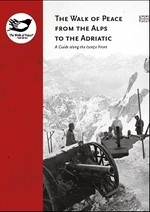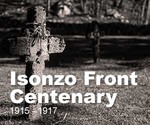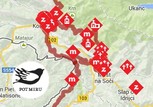Prisoners of War
"Here it is even worse, we have to work when it is state work we are forced, we have a railroad chief - leader, he is a beast, forcing and dragging us to work, no matter if you are healthy or sick. If you stay home sick, you are just as miserable, as the barracks are so cramped and humid that you cannot sleep at night and they are very unhealthy. Do not be afraid, we will remain what we are: faithful sons of the homeland for which our blood was spilt.”
Galicia, Carpathians, two names that were most often mentioned at the beginning of the Great War in the newspapers or discussions in families when there were no news and only the questions “Fallen or captured?” remained. After long months, first news arrived. The first combat on the Russian front against the Russians in Galicia claimed more than half of the men and officers of the 17th Slovenian Infantry Regiment (Carniolan Johns – typical Slovenians; Kranjski Janezi), and in the next battles, Austro-Hungarian Army had more wounded than fighting soldiers. Many Slovenian soldiers became Russian prisoners of war. Around 2.1 million Austro-Hungarian soldiers were captured by the Russians during the War; the number of Slovenians is unknown.
Slovenian prisoners of war were at first spread into camps in the Ukrainian hinterlands behind the front; later, with the number of prisoners growing, there were new camps established in European Russia, Siberia and central Asia. It could take weeks to get there. Most prisoner camps had hard living conditions; prisoners lived in overcrowded barracks, sheds, empty schools and other buildings. Camps had strict rules and timetables, movement was restricted and supplies of food, clothing and footwear were usually very limited. Prison life was made harder by unusual climate conditions, severe cold, high humidity and heat in summer; because of bad hygiene, there were epidemics of cholera, typhus and malaria. Prisoners of war could only send short letters and cards home and they received back money and supplies. Slovenian prisoners of war worked in mines and on railroads, in severe conditions, 12 to 18 hours per work day. Because of the overcrowded camps, many were offered a chance to live and work with farmers and landowners, forming close connections with them, many learned to speak Russian, which helped them survive the prisons easier. After the separate peace, concluded in Brest Litovsk in March, 1918, the amnesty for prisoners of war was declared, and Slovenian prisoners could finally go back home. The long way from the remote Siberian camps led them ‘across the seas back home’. For many prisoners the return home was another painful experience, as their loved ones often did not expect them any more, as many of them returned ten or even more years after leaving for the battlefields. On the other hand, they returned to a new country and new social environment, often hostile towards them, especially because of the possibility of spreading Bolshevik ideas, which they got acquainted with during the Russian revolutions.
The war on the Italian front and especially the defeat of the Austro-Hungarian Army caused many Slovenian soldiers to fall into Italian captivity. All soldiers of the famous 17th Infantry Regiment became prisoners of war. Italy was supposed to have held 10,000 Austro-Hungarian officers and 600,000 soldiers. Prison camps were quite strict, the prisoners were not allowed to move freely, the post was irregular, no newspapers were allowed, only food supplies were better than elsewhere. They returned from imprisonment in 1919.
Especially bitter was the experience of prisoners of war in Serbia, after a successful offensive of the Central forces and a return of the Serbian Army, the King and numerous refugees across the Albanian mountains to the sea and Italy, where Austro-Hungarian-Slovenian prisoners of war were transferred as well. The travel itself was the worst, people died of diseases, they had no food or water, they ate meat of slaughtered animals, pumpkins, grass, and sometimes even human flesh. “Out of 18,000 only 12,000 are left alive, so many died on the way”, wrote Mihael Zorko, a Slovenian soldier.
Dr Petra Svoljšak, Milko Kos Historical Institute at ZRC SAZU










